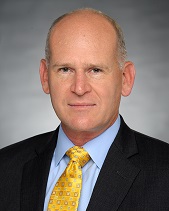On March 13, 2020, President Donald Trump declared a national emergency over the novel coronavirus, making $50 billion available for aid. This includes a requirement for all hospitals to enact their emergency preparedness/operations plans while lifting some regulatory barriers to care delivery that might impede successful crisis response.
This crisis triggers a cascade of activities hospitals must undertake to activate new protocols and committees, shore up resources and materials, establish communication plans and enact a myriad of other steps to transition into emergency mode. This includes adherence to the federal Emergency Medical Treatment & Labor Act (EMTALA) guidelines to not turn away or redirect COVID-19 patients and/or any persons who suspect they may have been exposed to COVID-19.
As the United States’ COVID-19 confirmed caseload and resultant mortality grow, public anxiety continues to heighten with disease incidence and fears that hospitals may soon meet and exceed capacity. Hospitals are now trying to manage a changing demand for services under the unique and unpredictable conditions presented by the pandemic.
Increased pressures coming from patients, staff, physicians and the general public put hospitals in a challenging position, requiring new strategies to address patient concerns while mediating an alarmed workforce.
Hospitals must plan now to navigate four (4) key challenges:
1. Staffing shortages
- Hospital staff are at risk of exposure, and given their unique role, it is essential they adhere to both the universal precautions when caring for all patients and the strict self-quarantine protocols when exposed to COVID-19 positive individuals
- At-risk staff, those over the age of 60 or those with existing chronic medical conditions, may be directed to stay home to avoid contracting the disease
- School and daycare closures may force others to stay home as caregivers
- Many employees and providers also may be fearful of reporting to work and call in sick
- All of these issues may create staffing gaps in critical areas while managing an expected patient volume increase in the coming weeks
Mitigation Opportunity: Augment the workforce with non-clinical staff and re-prioritize tasks
- Should clinical staffing become strained and overwhelmed with patient needs, hospitals should offload administrative and non-clinical activities to non-clinical staff. These activities may include patient and equipment transport, on-the-ground patient navigation and triage support, project management, data analysis and simple administrative tasks supporting clinician efficiency with patient treatment.
Mitigation Opportunity: Increase outreach and prevention
- Use non-clinical staff to manage call volumes and support keeping patients in their homes through scripted outreach and navigation. Train the non-clinical staff to call at-risk patients to educate them on current best practice prevention and self-quarantine protocols as well as potential symptoms and key indications for when to come into the hospital.
- Use available telehealth resources to reduce utilization of onsite clinical staff. Empower non-clinical and clinical caregivers with the use of apps to enable video and audio communication, as well as monitoring and intervention planning, among homebound patients, families, non-clinical support staff and remote clinical providers.
Mitigation Opportunity: Support vulnerable populations and/or staff through home delivery of supplies needed during quarantine
- Use non-clinical staff to provide home delivery of food, medicine, equipment and other critical resources to support in-home quarantine.
2. Administrative overload and planning volume
- Hospital administration is not only expected to continue with normal operations but also must accommodate the expected growth in the patient volume requiring testing or treatment.
- The federal government announced all hospitals will be required to activate Emergency Operations Plans (EOPs). This comes with a tremendous amount of effort and oversight, demanding time from leadership and staff alike. With the increase in immediate responsibilities and ongoing public anxiety, hospital administrators must be thoughtful about how to distribute tasks across available staff, take steps to proactively manage the EOP and maintain optimal performance in a highly dynamic environment.
Mitigation Opportunity: Add project management and planning support
- Establish a remote or on-site project management office (PMO) to help organize and streamline work. Use temporary or outsourced project management resources to provide risk monitoring and escalation. This will ensure optimal deployment and use of resources, resulting in improved management decision-making ability.
- Task these resources with organizing specific projects and efforts, such as a large-scale testing intervention, erecting temporary facilities and managing vendors, while freeing up regular full-time staff to manage ongoing hospital operations and patient treatment.
- Review and update EOPs for the current situation and develop detailed implementation strategies for operational and staffing plans that will be needed in the coming weeks.
3. Uncertain and quickly changing environment
- Many local and state governments have announced bans on large community gatherings. Private companies and academic institutions have shifted to a work or study-from-home model or closing down temporarily. Food hoarding is occurring across the country, thus potentially putting low income and frail populations at risk for access to food. Hospitals must understand the immediate and specific local impacts of this pandemic and produce regular, real-time updates and corresponding actions regarding any areas of risk, including resource availability, process efficacy and financial impact.
- As disease incidence continues to rise, panic and confusion may spread in the community. Hospitals may be inundated with high-risk cases, lower acuity patients and a large volume of calls from concerned patients. Strategies for education and outreach are key to dispel rumors and increase evidence-based awareness, promoting community safeguards and prevention.
Mitigation Opportunity: Dedicate an internal “czar” with deputies for 24/7 coverage
- Designate a single executive, such as the chief medical officer (CMO), chief operations officer (COO) or chief nursing officer (CNO), to oversee emergency operations and communications.
- Ensure consistency in communication; the designated executive should review all documents and communications to physicians, staff, patients and family and to the larger community.
- Rotate other support deputies or executives to provide coverage 24 hours, 7 days a week as well as serve as backup should the designated “czar” themselves need to self-quarantine or otherwise take time off.
Mitigation Opportunity: Develop a communication plan
- In times of health crises, patients look to their clinical providers for answers. Provide staff with regular information updates, talking points and resources for unanticipated questions so they can deliver clear and up-to-date messages to patients.
- Beyond individual messaging, develop an overarching communication strategy that leverages a full range of communication channels so that the hospital can translate national news, hearsay and misinformation into the local reality and support public health efforts. This includes a highly structured social media strategy and coordination with local public health agencies
Mitigation Opportunity: Leverage data analytics and reporting
- Leverage data from existing systems to define metrics that monitor the changing status and serve as leading indicators of needs or issues. Through regular reporting and review of these metrics, hospital administration can make timely decisions and remain proactive to mitigate risks.
- This data will be key in properly managing test utilization and patient treatment and empowering emergency operations teams to meet critical targets.
4. Disruption of standard workflows
- Current workflows and staffing may be inefficient and insufficient to accommodate growing needs. Managing affected high-risk individuals along with lower-acuity patients will require immediate workflow augmentation to properly mitigate issues such as the spike in respiratory care needs, reduction of bed availability, limited intensive care unit (ICU) capacity and equipment such as ventilators and resource allocation.
- With the lifted regulations and crisis situation, front line staff may find themselves with new authority to make critical decisions. Many facilities have EOPs in place but never operationalized them. It will be critical to put them into practice. Establish processes and guidelines to maintain order in what can be chaotic times.
Mitigation Opportunity: Implement process design
- Optimize baseline processes, caseloads and staffing to distribute resources according to a new reality of patient needs. Maximize the utilization of resources against potentially overwhelming demand and redistribute resources away from services that may see utilization declines, such as elective surgery.
- Modify methods of triage, escalation and care when the standard route is unavailable. With lifted regulations, scopes of clinical practice may expand. Review and adapt EOP processes to address this and all changing regulations and guidance.
- To get ahead of on-site demand, consider implementing a nurse hotline that can field and triage patients before they enter the facility and leverage community resources as other organizations implement their crisis responses. The 96-hour restriction on length of stay has also been lifted, which will allow more rapid discharge to skilled nursing facilities (SNFs) to free up inpatient capacity.
In Summary
Hospitals and health systems will need to embrace planning efforts immediately even if severe cases do not start showing up for weeks. Expect in the coming days additional guidance and details on the types of waivers the Trump administration will allow. “Business as usual” will no longer be an option for American health systems but amidst the uncertainty, hospitals and health systems can take steps to improve the circumstances around our new reality.
For additional information on how to prepare your hospital or health system for COVID-19, please contact Allen Miller, Principal & CEO, at amiller@copehealthsolutions.com or 310-386-5812 or Elizabeth DuBois, DNP, FNP-BC, AAHIVS, Vice President, at edubois@copehealthsolutions.com or 213-369-0571.


